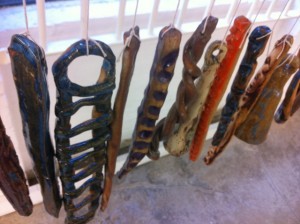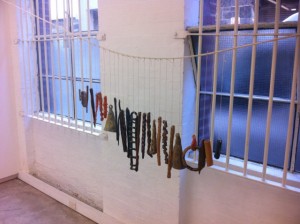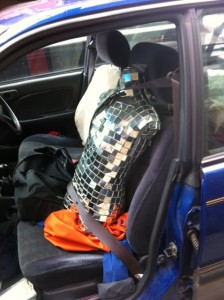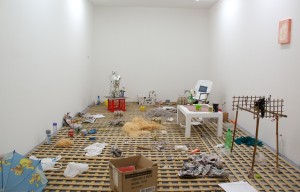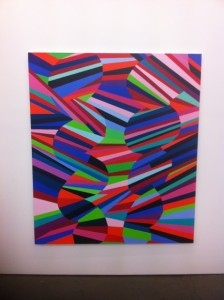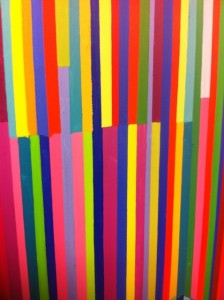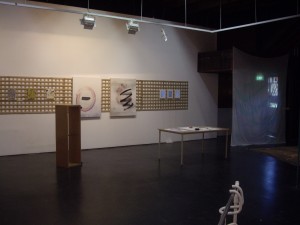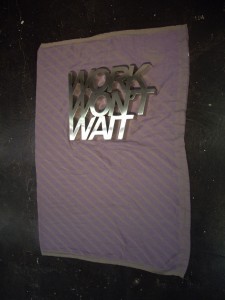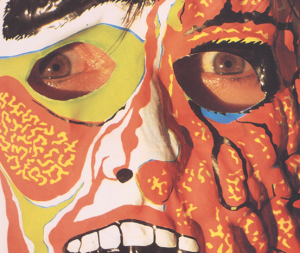To be outside, to be inside, to be free, to be bound, to be
Walking up to Kate Newby’s ceramic wind chimes at Between being and doing, a group show at Utopian Slumps, I was aware that I wouldn’t be able to hear them clink in the wind from inside the gallery. I was talking to the curator about another piece of Newby’s in which she traced two outdoor desire paths to where they each met and then filled the worn cross-path puddle with concrete. I thought it was an interesting action. The way Newby’s art works for me is its play on landscape; it wants to be outside and doesn’t really seem to need the gallery. Don’t get me wrong; it looks good in the gallery and brings the outside in, but it’s transient, ready to roam.
Last Wednesday night, Melbourne Nite Art happened and roam it did—a bunch of drunk women broke one of the chimes by using their hands to emulate a devastating wind. As the gallerist came to the rescue they fled with the broken chime. Out it went. I thought it was poetic in a weird way as Newby’s romance is elsewhere already. Off the grid.
Free feudal barter store, Christopher LG Hill’s Studio 12 show at Gertrude Contemporary, has Hill filling the space with his own work; publications, paintings, sculptures, records, toys, collages, Asian milk drinks. The wooden lattice that covers the floor is like a tilled field from which the objects shoot upwards. Some things are more mulched down than others but these parts give nutrients to the work as a whole and there are some juicy fruits to be taken. Everything in the show is up for grabs and free. I took a mirror-tiled bust of an adolescent home.
And then there’s new work by Melinda Harper at Block Projects. Her paintings strike me as rich, like she needs what she paints. Each feels executed as though the finest things in life cost a bit but not heaps; cadmium red and yellow, cerulean blue, studio rent.
Harper’s painting style is nonchalant and frank. The aesthetic action versus its perceived monetary value; greasy tendrils of oil paint that crisp up where the masking tape hasn’t sealed thoroughly; the coolness of her one coat of oil paint. The work is not over-prepared like a lot of bad flat designer painting of the moment, it has soul. It’s done as it needs to be.
Between being and doing (Kate Newby, Joshua Petherick, Sriwhana Spong, Alex Vivian), curated by Brooke Babington and Melissa Loughnan, Utopian Slumps, Melbourne, 27 July – 17 August 2013.
Free feudal barter, Christopher LG Hill, Studio 12, Gertrude Contemporary, Melbourne, 25 July – 23 August 2013.
Melinda Harper, Block Projects, Melbourne, 23 July – 17 August 2013.
